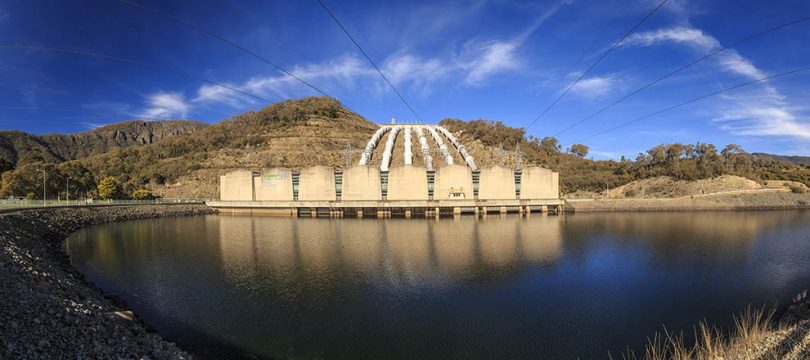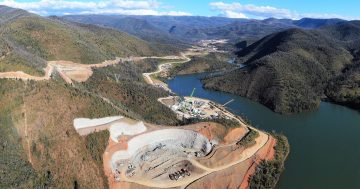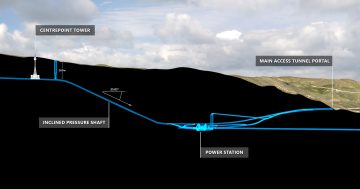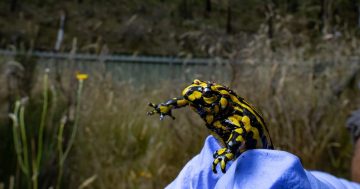
Snowy Hydro’s Tumut3 power station and the Talbingo Reservoir. Photo: Snowy Hydro.
An Environmental Impact Statement (EIS) for exploratory works for Snowy Hydro’s proposed Snowy 2.0: pumped hydro-electric storage and generation project has been released for a 28-day public exhibition period.
The new hydro project within Kosciuszko National Park is seen as part of the solution to delivering reliable energy to the national electricity market as coal-fired generation winds down and the take-up of renewable sources increases.
But there are concerns about the disposal of excavated material, impacts on water quality, and how threatened plant and animal species will be affected.
Snowy Hydro is seeking approval to proceed with a program of exploratory works to gain a greater understanding of the underground geological conditions at the likely location of the proposed Snowy 2.0 underground power station that will provide 2000 megawatts of power, increasing Snowy Hydro’s capacity by 50 per cent.
The exploratory works will involve construction of an exploratory tunnel to enable exploratory drilling and provide a greater understanding of the underground conditions at the power station cavern.
An EIS addressing their environmental, social and economic impacts has been submitted to the NSW Government and will undergo comprehensive assessment as part of the planning and approvals process.
Snowy Hydro says the works have been designed in a way to avoid and minimise environmental impacts, saying the location of the works at the Lobs Hole Ravine region and the site access roads were redesigned and relocated to help avoid sensitive areas and species.
It says the exploratory works, if approved, will provide further important information as part of the Snowy 2.0 project design process. While geological investigations have already been carried out from the surface, the rock has not been explored in-situ, at depth.
The proposed works will include horizontal core samples taken at depth, almost one kilometre below the ground. The new geological data will ensure that the precise location and design of the underground cavern can be confirmed.
The exploratory tunnel will be about 3.1 km long to the site of the underground power station and an accommodation camp for the construction workforce will need to be built.
The works will also include road works and infrastructure to enable access and transport by barge on Talbingo Reservoir.
It is proposed that excavated material will be dumped on land sites and in the reservoir, subject to water quality controls and monitoring.
Snowy Hydro says gathering additional geological information as soon as possible is critical. Similar exploratory works were undertaken in the 1950s before the construction of the Snowy Scheme’s existing underground power stations of Tumut 1 and Tumut 2.
To assist the community to access the EIS, Snowy Hydro has launched an interactive online EIS portal with information and videos about the project. It can be accessed here.
The Exploratory Works EIS is also available to download from the Department of Planning and Environment (DPE).



















